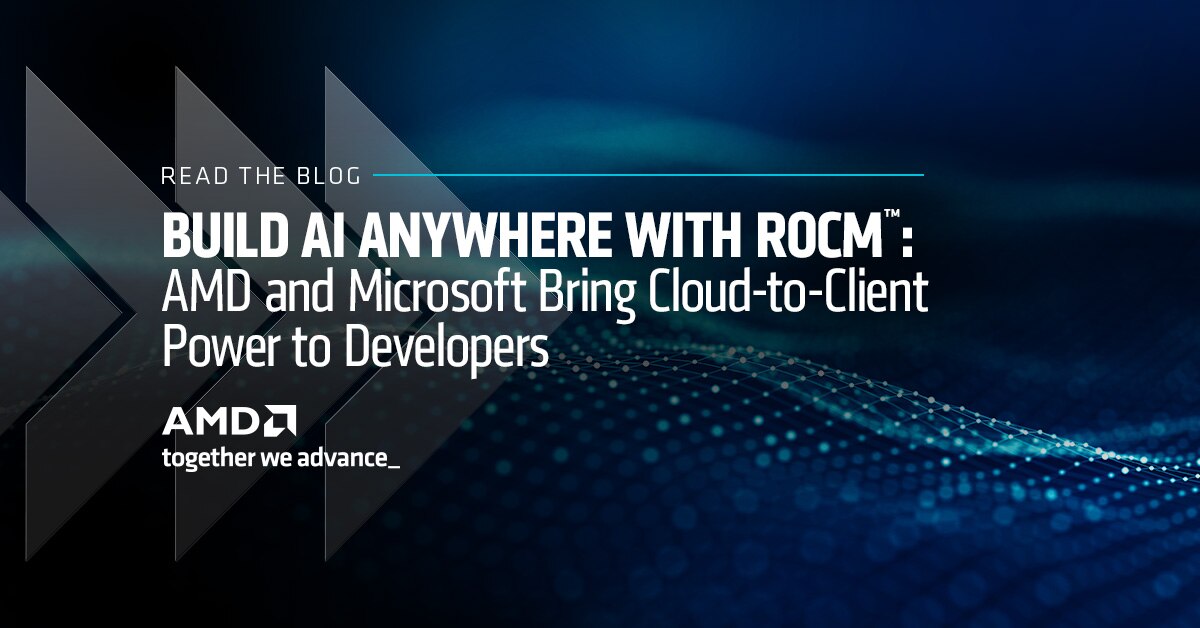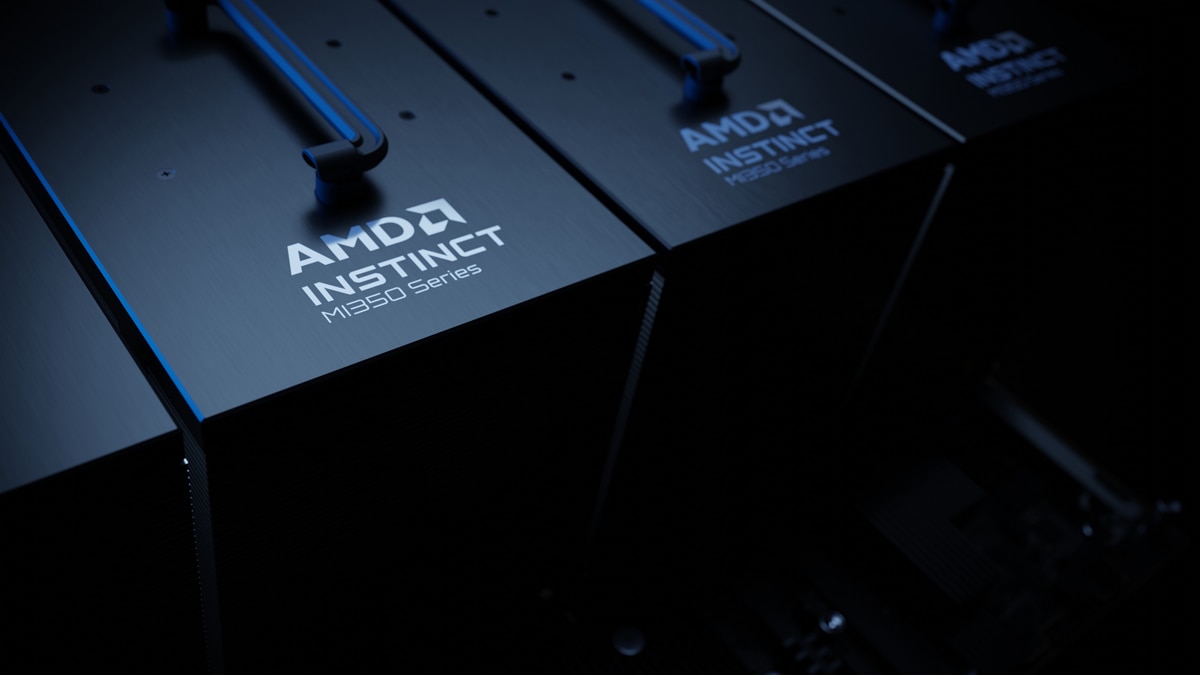Preserving U.S. Leadership in the Race for AI
May 08, 2025

On Thursday, May 8, 2025, Dr. Lisa Su testified at a hearing of the Senate Committee on Commerce, Science, and Transportation, led by Committee Chairman Ted Cruz and Ranking Member Maria Cantwell. Lisa Su is uniquely positioned to offer perspective into how to preserve America’s leadership in AI technology development, and why it’s important not only for the semiconductor industry but for the country. To view the proceedings, please visit the committee’s website.
Testimony for the Record
Submitted to the Senate Commerce Committee for the Hearing
“Winning the AI Race: Strengthening U.S. Capabilities in Computing and Innovation”
May 8, 2025
Dr. Lisa Su
Chair & CEO, Advanced Micro Devices Inc. (AMD)
Chairman Cruz, Ranking Member Cantwell, Members of the Committee, thank you for the opportunity to speak with you at such a consequential moment.
I am Chair and CEO of AMD, a U.S.-headquartered semiconductor company founded 56 years ago. We build high-performance computing chips that power the modern economy.
Every day, billions of people rely on products and services powered by AMD technologies. AMD chips also play a vital role advancing many of our nation’s most critical missions, from powering defense systems and secure communications to enabling breakthrough scientific research, medical innovations, and quantum computing.
Our work in supercomputing showcases the full strength of AMD’s innovation and public impact. Through more than a decade of partnership with the Department of Energy, AMD now powers the world’s two fastest supercomputers: Frontier, which went into operation at Oak Ridge National Labs in 2021, and El Capitan, which went into operation at Lawrence Livermore National Labs late last year. These systems are critical infrastructure for U.S. national security and scientific leadership, including the latest advances in drug discovery, medical research, climate research, hypersonic flight, and even training future generations of more capable AI models.
Today we are here to talk about AI. No technology today better demonstrates the power of high-performance computing than AI.
AI is the most transformative technology of our time. The United States leads today, but leadership is not guaranteed. This is a global race, and the outcome will shape economic growth, national security, and technological influence for decades to come.
Maintaining our lead requires excellence at every layer of the AI stack. AMD’s collaborations with Microsoft and OpenAI demonstrate how industry leaders can work together across hardware, software, and systems to advance state-of-the-art AI.
Underneath every model, every breakthrough, and every application is massive amounts of computing power. If we want to lead in AI, we must lead in the infrastructure that powers it. That requires urgency across five national priorities.
First, we must keep running faster. America leads when it moves fast and thinks big. From semiconductors to the internet, speed has turned bold American ideas into global industries. In AI, speed requires accelerating chip and system innovations that deliver more performance with greater efficiency. It also means making AI compute infrastructure readily available across the industry. This will require rapidly building data centers at scale and powering them with reliable, affordable, and clean energy sources. Moving faster also means moving AI beyond the cloud. To ensure every American benefits, AI must be built into the devices we use every day and made as accessible and dependable as electricity. From vehicles and sensors to PCs and medical tools, bringing the power of AI to every enterprise and every American will enable faster decisions, smarter systems, and better services where they matter most. We have the technology, intellectual property, and talent to do that today, but it is a global race and we must keep accelerating our pace.
Second, we must champion open ecosystems. Open standards have long been a cornerstone of U.S. leadership. The same approach must guide our path with AI as well. Open ecosystems allow hardware, software, and models from different vendors to work together. This accelerates innovation, reduces barriers to entry, strengthens security through transparency, and creates healthier, more competitive markets.
Third, we must build a robust domestic supply chain for advanced semiconductor manufacturing and packaging. AI leadership depends on the ability to build complete, integrated systems. That means ensuring we have domestic capabilities in both wafer manufacturing at the most advanced nodes and next-generation packaging technologies as well as the advanced system capabilities needed to bring it all together. AMD is proud to be one of the first partners producing leading-edge chips at TSMC’s new fab in Arizona. The domestic semiconductor manufacturing projects announced to date represent meaningful progress, but there is much more that we can do. This is an area where strong public-private partnerships are critical. The entire semiconductor industry is aligned on the need to work together and partner with the government to significantly scale U.S. chip production and advanced packaging capabilities here at home.
Fourth, we must invest in talent and ensure our national strategy for STEM education, workforce training, and immigration supports sustained AI leadership. The private sector can certainly do more, including expanding university partnerships, investing in reskilling programs, and developing the cross-disciplinary talent required for success. We should incentivize companies to increase their most critical AI R&D efforts here at home and ensure our immigration policies attract and retain the world’s best AI talent. We should make America the absolute best place for AI talent in the world.
Fifth, we must balance the need for national security with the imperative to enable the widespread adoption of U.S. technologies. As the government considers policies like AI diffusion, it is important to remember that the U.S. leads in AI today and we want the rest of the world building on our platforms. If our international partners cannot access U.S. platforms, they will adopt alternatives that may be less advanced today but will mature over time. Threading this needle requires closer collaboration between government and industry to ensure rules are clear, consistent, and aligned with both competitiveness and security.
This is a pivotal moment. A once-in-a-generation opportunity to secure U.S. leadership in AI and advanced computing. This is not just about developing a transformative technology. It’s about shaping the future of our economy, safeguarding our national security, and enhancing our global competitiveness.
Now is the time to ensure the United States doesn’t just keep up, but takes the decisive steps needed to cement our leadership.
Thank you again. I look forward to your questions.









